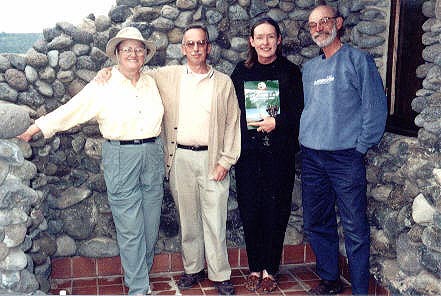| Back at the lodge, we met with
Liz and Bob, two members of our church choir who
were on another safari and just happened to stay
at the same lodge these two nights.  That's about it for wild
game viewing. We have a few more stops to make
and will probably cover them all in the final
page of this Africa site. It contains pictures of
Giraffe Park, a curious place where giraffes come
and literally eat out of your hand. We also
visited the farm that Karen Blixon describes in Out
Of Africa. So, join us for our That's about it for wild
game viewing. We have a few more stops to make
and will probably cover them all in the final
page of this Africa site. It contains pictures of
Giraffe Park, a curious place where giraffes come
and literally eat out of your hand. We also
visited the farm that Karen Blixon describes in Out
Of Africa. So, join us for our
WRAP
UP.
|
Comments are welcome. Table of Contents